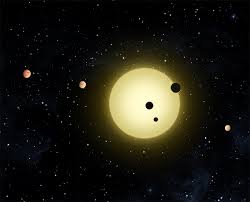March 8, 2014 – This is a great time to be an astronomer. It appears we are discovering exoplanets by the boat load and we are finding out that solar systems, some like ours, and some bizarrely different, seem to be the rule and not the exception.
In the last two weeks the exoplanet count has reached 1,692 confirmed and 3,845 suspect candidates. That brings the total of exoplanets to over 5,500. And to think, less than 20 years ago we here on Earth knew only those planets in our own Solar System. You can blame the Kepler mission for the latest upping of the count with 715 newly-verified discoveries orbiting around 305 stars in the Milky Way. And many of the new planet discoveries are in systems very similar to ours.
Now add research done at the University of Hertfordshire, Centre for Astrophysics Research, which concludes that 75% of red dwarfs, the most abundant stars in our Universe, have an accompanying planet or planets orbiting them. And to boot, at least 25% of those stars’ planets would be defined as lying within the Goldilocks Zone, suitable for life similar to that on Earth to exist. The lead researcher, Dr. Mikko Tuomi states, “We are clearly probing a highly abundant population of low-mass planets, and can readily expect to find many more in the near future – even around the very closest stars to the Sun.”
With these two announcements we are continuing to see a trend that points to the potential for the conditions for life to be widespread throughout our galaxy as well as the rest of the Universe. It doesn’t mean that life has reached a point beyond self awareness and has evolved a technological society that we can detect through radio astronomy. But it does suggest that we living creatures here on Earth are far from alone in the Universe.
For those who have worked with the SETI (Search for Extra Terrestrial Intelligence) Project, these discoveries must give them renewed purpose to seek other intelligent life orbiting a planet that might possibly be no further than a nearby star.













